The Rasselas area was once a part of Sergeant Township in McKean County. It is one of the oldest settlements in present day Elk County. From about 1820 till about 1846, settlers from the north in New York state began to arrive to clear land for farming and lumbering operations. Although there never was a village proper, the Rasselas name encompasses a rather large area of north-eastern Jones Township. Mostly a farming community, the Rasselas area lays rich in history.
In June of 1837, a man by the name of Rasselas Wilcox Brown and his brother-in-law, Judge Brownell, started a journey from Cayuga County, New York in route to Michigan to explore and settle there. Since their journey to Michigan took them through parts of Jones Township, they decided to visit Browns uncle, William P Wilcox. Wilcox enjoyed the company of his nephew and had requested that he stay and settle here. However, Brown and Brownell continued to Michigan, where they stayed for only a few months.
Upon their return back through Pennsylvania, Brown had decided to take his Uncle up on his offer and decided to settle nearby. Brownell, however, moved on to settle in Smethport. In the fall of 1838, Brown hired a man to cut timber to clear land for him and to construct a home for his family. By early spring of 1838 Brown went back to New York to gather his family and returned to Elk County. Among the early settlers of Elk County, probably no man was better known or more highly esteemed than Rasselas Wilcox Brown.
In the summer of 1846 the first German settlers began to arrive to the area. It is said that Mr. George Markert traveled from Lancaster County to settle in nearby St. Marys after reading the overstated claims of the new developing German – Catholic settlement. St. Marys was advertised as a thriving and prosperous German community having mile long streets and steam boats traversing the Elk Creek. Upon arrival in St. Marys, Markert found nothing but some scattered log huts in a dense primeval forest. Disappointed, Markert purchased several hundred acres of land just east of Wilcox and north of St. Marys, in the area now known as Rasselas.
In 1850 George Markert and his family arrived began to clear land and settled a very large tract of land in the Rasselas farming district. The Markert’s often enjoyed harvested the spring sap from the maple trees to produce maple syrup. Thus providing the name of “Maplewood Farm” to the property.
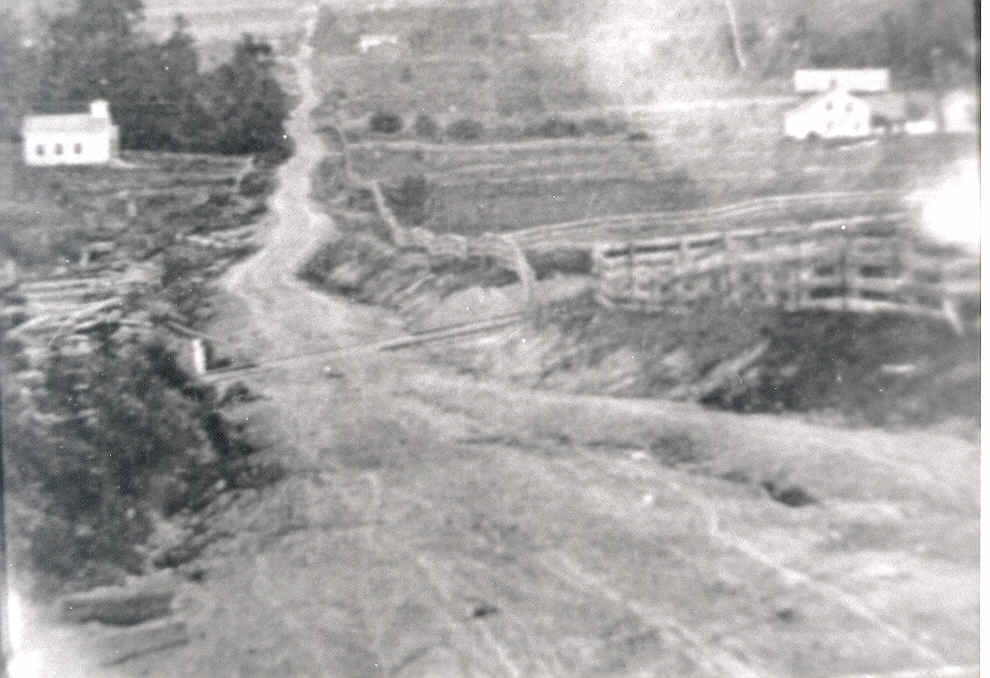
Much of the Markert’s Maplewood Farm was later taken by the Federal Government for the East Branch Flood Control Project. While other large landowners willing sold land to the Federal government, Mr. Frank Markert had fought the eminent domain proceedings and the government was not permitted to obtain more land than that was required to be above the 50-foot high water mark of the new reservoir. As such, the Markert’s became the owners of much valuable lake side property. This then resulted in the sale of numerous building lots along the new lake. Today this area along “Maple Lane” is home to many beautiful summer homes and camps.
The former Markert farm still stands, in a somewhat rundown condition across from the Jerry Rd. / Markert Road intersection. Although the heirs of the Markert family still retain several hundred acres of land in the Rasselas area, the farm itself and about 10-acres of land was lost at a Sheriff sale for non-payment of property tax. A family from St. Marys now own the farm.
Inspired by George Markert’s efforts in 1850, many other German families came from nearby St. Marys to settle here in the newly formed Jones Township. These German settlers were a group on mostly thrifty and hard working farmers who earned their livelihood by tilling the land. As such this area of Jones Township became a major farming district. Many travelers passing through on the Milesburg-Smethport Turnpike marveled at the beautiful and productive farms in the middle of the wilderness. Farming families such as Dill, Markert, Hetznecker, Pistner, Valentine-Miller, Stoltz, Retzer, Brechtel, Weindart, Bonnert, and Meyer settled in the area.
By the time of the Civil War in 1861, about 40 families were settled in the Rasselas area.
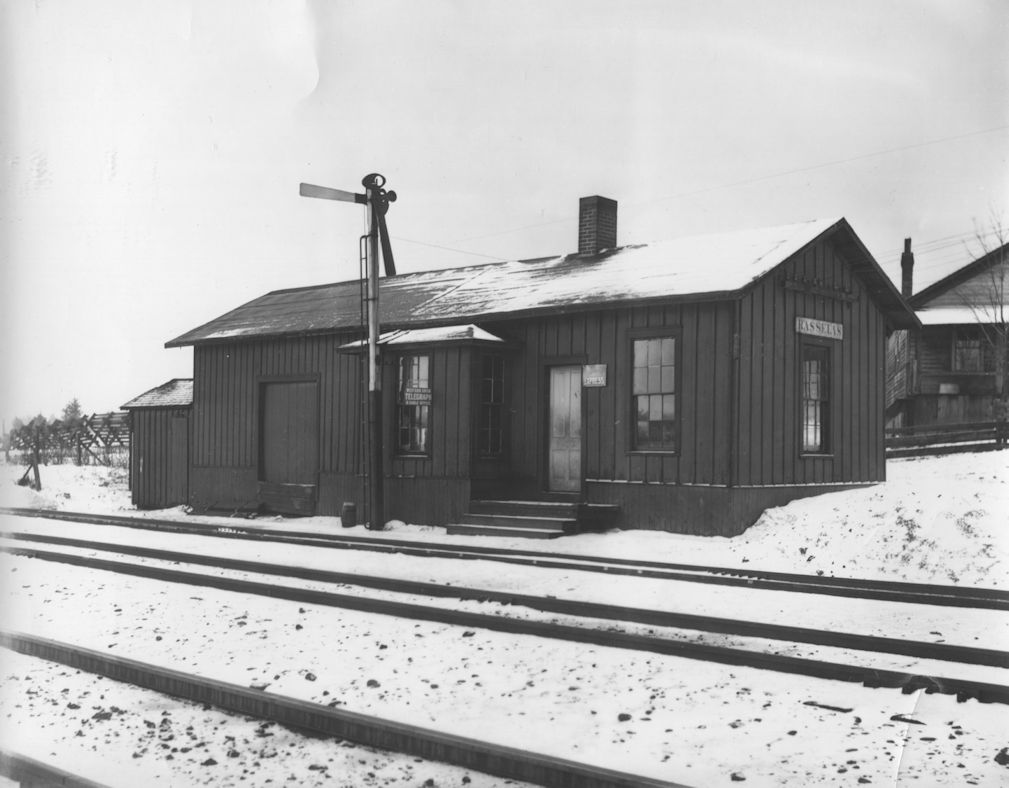
Up until 1872, the Post Office in Williamsville served the residents in the Rasselas area. In that year, the Post Office was moved to the home of Michael Weidert, which was located directly across the road from the Holy Cross Church, at which time the name of “Rasselas” was given to the community in honor of Rasselas Wilcox Brown when the Erie Railroad was constructed and installed passenger terminal on Rasselas Wilcox Browns’ property. (located where the railroad crosses the Rasselas Road) Most say the name “Rasselas” was suggested by General Thomas Kane, who just a few years prior purchased the William Wilcox home nearby.
Kane spent much time in Rasselas as he had many financial interests in the area, including a sawmill and a limestone quarry and an adjoining kiln located off of what is now Lime Kiln Road. Kane had leased the home of William Wilcox and lived here for about two years. Kane gave the name “Upland” to his newly acquired property, which later became a summer home for he and his family.

Whereas farming was a major foundation in the Rasselas area, the farmers met at the Summit Hotel and on September 8, 1900 formally organized the Rasselas Grange No. 1187. Meeting were originally held at the Bonnert Schoolhouse. Later a new building was erected where the Holy Cross Picnic grounds are now.. Public dances were commonalty held here as were diners, lunches and occasionally weddings.

Whereas farming was a major foundation in the Rasselas area, the farmers met at the Summit Hotel and on September 8, 1900 formally organized the Rasselas Grange No. 1187. Meeting were originally held at the Bonnert Schoolhouse. Later a new building was erected where the Holy Cross Picnic grounds are now.. Public dances were commonalty held here as were diners, lunches and occasionally weddings.
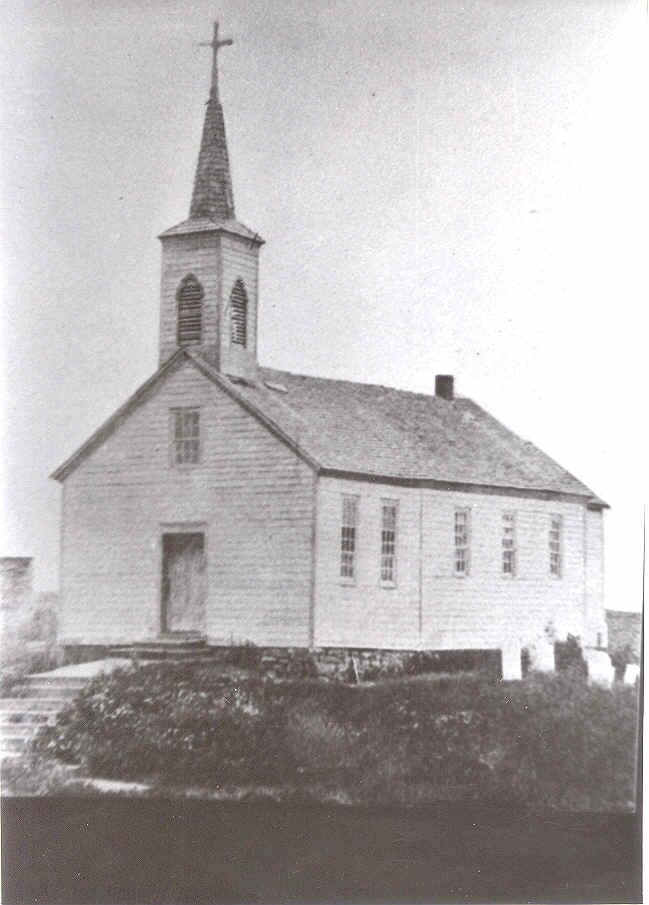
As the population of the German Catholics grew, the need for a place to worship was recognized. The first Catholic services in Rasselas were conducted by the Benedictine Fathers from St. Marys who would travel the fifteen miles on the St. Marys – Olean Turnpike on foot or horse back to offer mass. The first building was constructed in 1855 and was constructed of logs cut by George Markert and his crew. The church was located near the present day cemetery and as dedicated as the “Holy Cross Church” on September 14, 1855. The project was truly a community venture and many volunteers worked long hours to complete the building. This structure was later covered with clapboard.
The church building eventually became too small for the growing community. In 1884 land across the street from the Weidert home was donated by Captain Clay and construction of a new church was begun. The cornerstone of the new church was laid in 1885, however construction of the church and the building of a rectory lasted for several years. Although mass is no longer offered at the Holy Cross Church, the beautiful structure and the spirits of the strong German families that once worshiped here stands strong at the top of the hill with it’s steeple reaching skyward overlooking the area known as Rasselas.
The church is constructed of native sandstone dragged from nearby mountains by mule and oxen. Members of the church hewed the stone by hand at the site. The 24-inches thick stone walls (30-inches in some places) makes the Holy Cross Church as impregnable as a fortress. The slate roof, on of the finest examples of German craftsmanship to be observed was cut from quarries in eastern New York. The stain glass windows were imported from Europe. The pews are made of oak, almost as durable as the stone walls.
Operations of the church was turned over and became part of the Warren Mission. Later the church was under the Wilcox mission of the Erie Diocese. Then 2017, the church was permanently closed and sold to a private non-profit community organization. It has been sitting empty since.
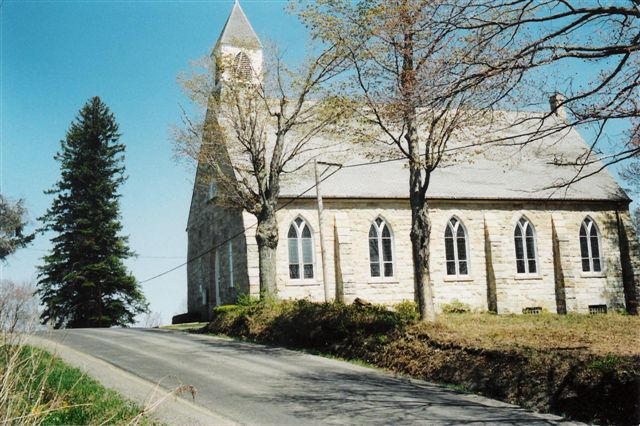
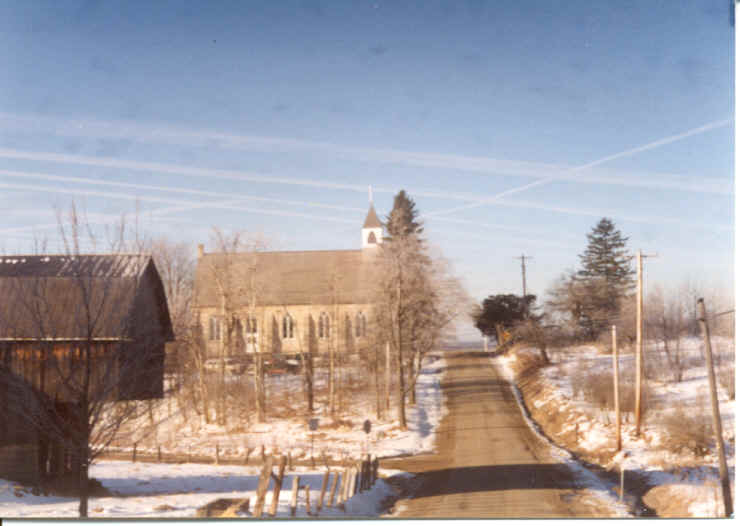
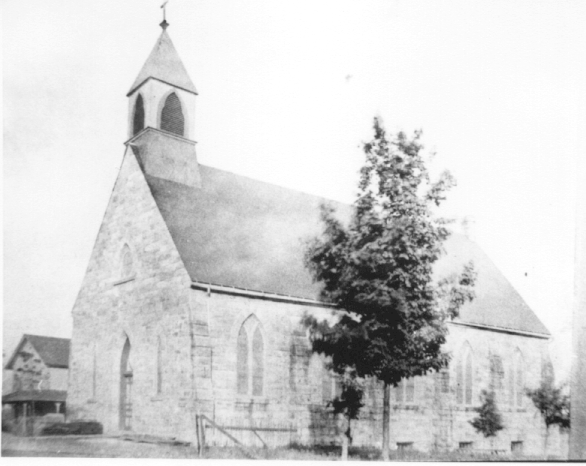

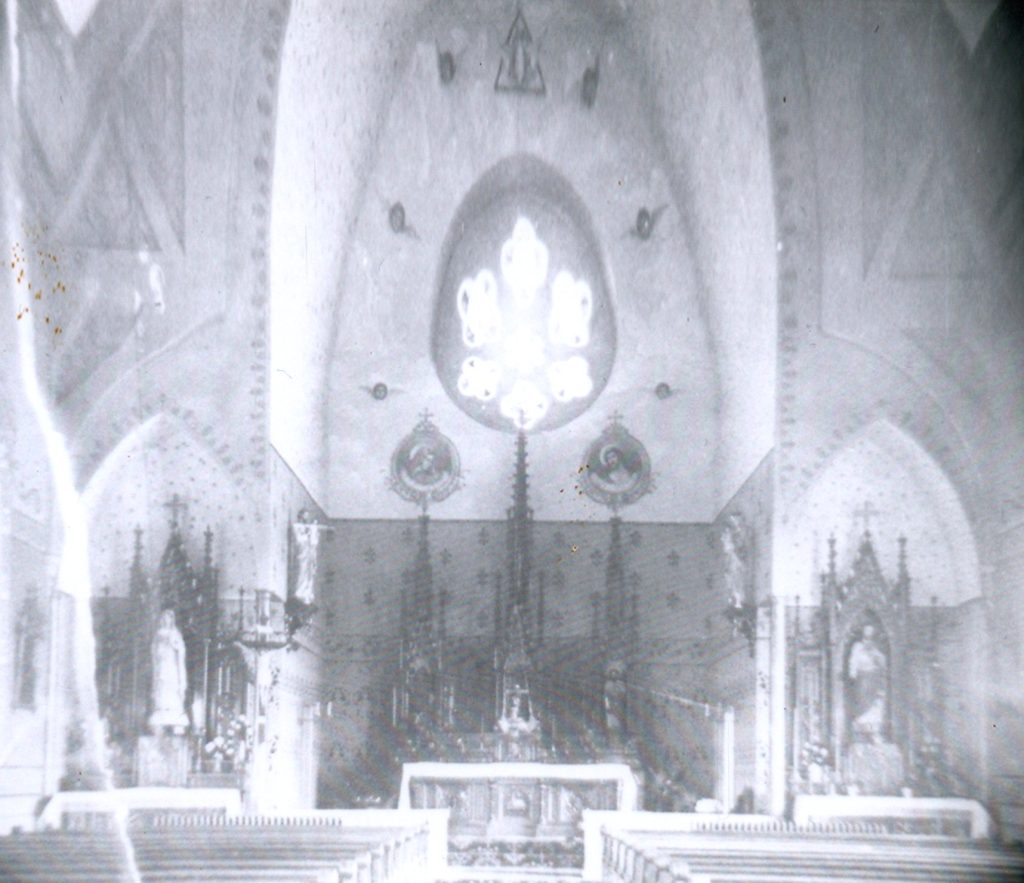
Several one-room school houses served the Rasselas area. Schools were erected at the corner of the Markert Road and Jerry Road, the Bonnert School was located at the intersection of today’s Stony Hill Rd (then the St. Marys Turnpike) and the Markert Road, The oil Creek School was built near the intersection of today’s Mefferts Run Road (then the Milesburg-Smethport Turnpike) In 1911 , the Jones Township School Board erected a new brick building to serve the Rasselas area at the intersection of Lime Kiln Road and the Rasselas Road (then the Milesburg-Smethport Turnpike).
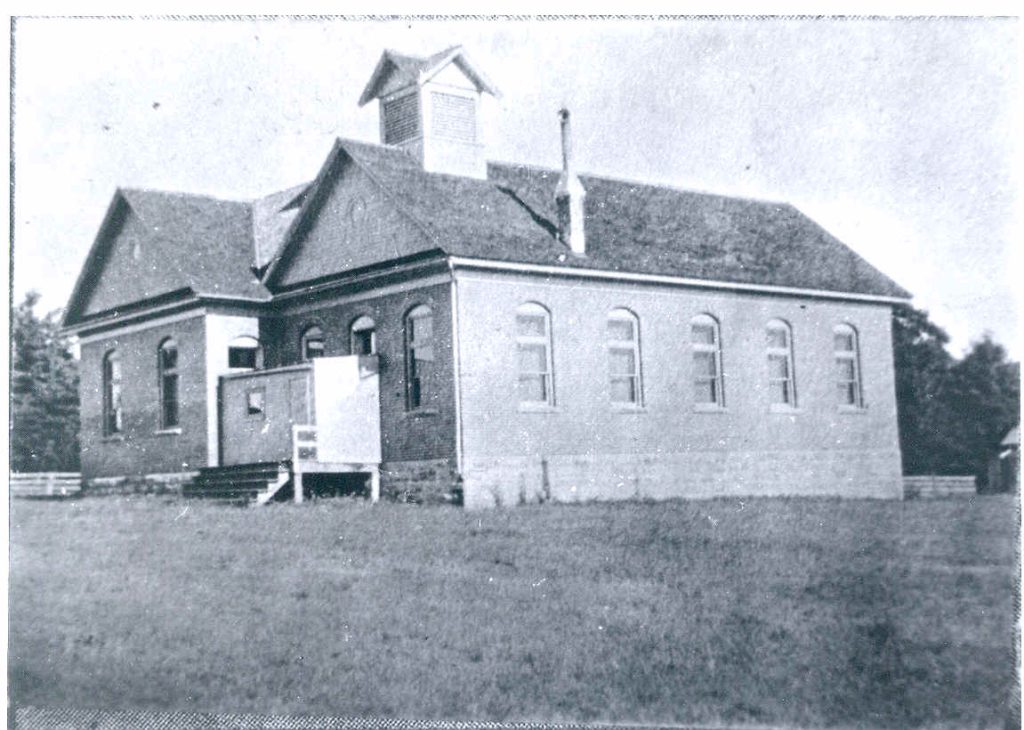
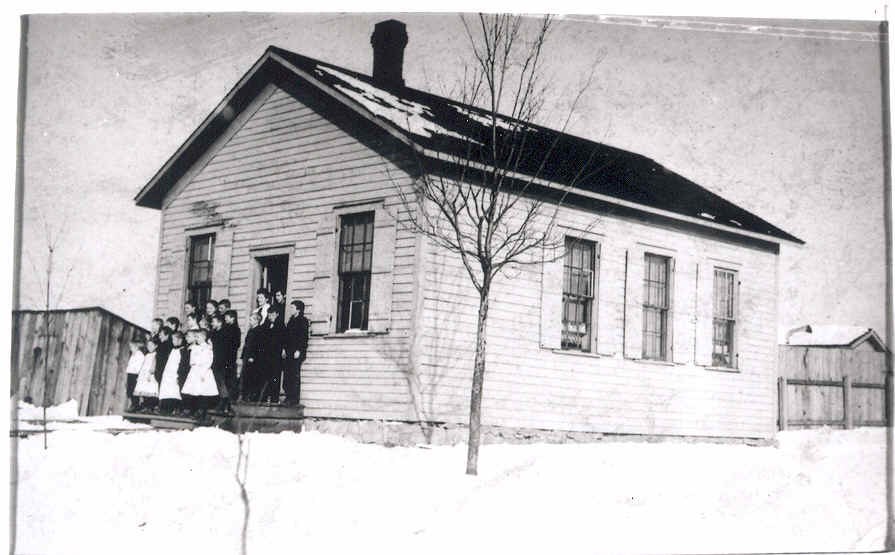
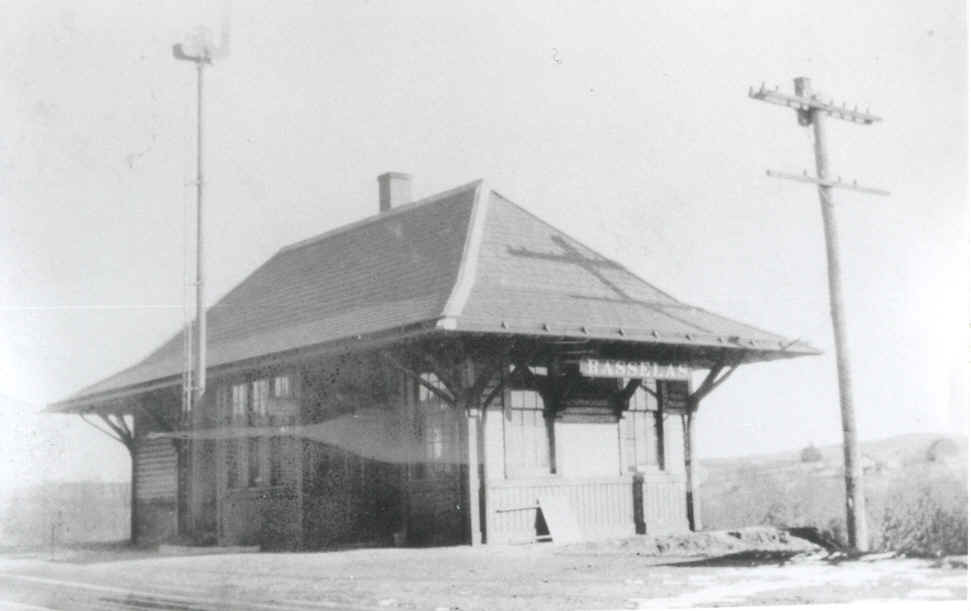
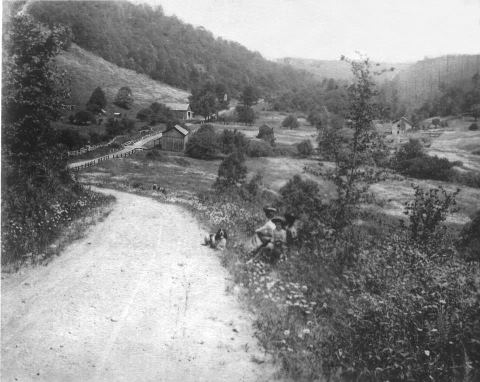
In 1889, five additional rooms were built onto the structure. In 1925 -26 a new furnace was installed, and many other improvements accomplished, such as hardwood floors, a bathroom, new entryway, and a summer wash (laundry) house was built out back. This impressive dwelling had 15 rooms. There were two rooms in the tower measuring 7-foot square. The dwelling had a music room, huge dining room and a parlor.
The original barn was struck by lighting in 1904 and a newer barn was constructed on the other side of the house. This barn was later demolished in June 1944. The unoccupied dwelling was later destroyed by fire in the late 1980’s.
The Bonnert family was a very prominent family in the Rasselas area, making this former homestead a very valuable land mark. Unfortunately, today, all that remains is the concrete sidewalk to the home.
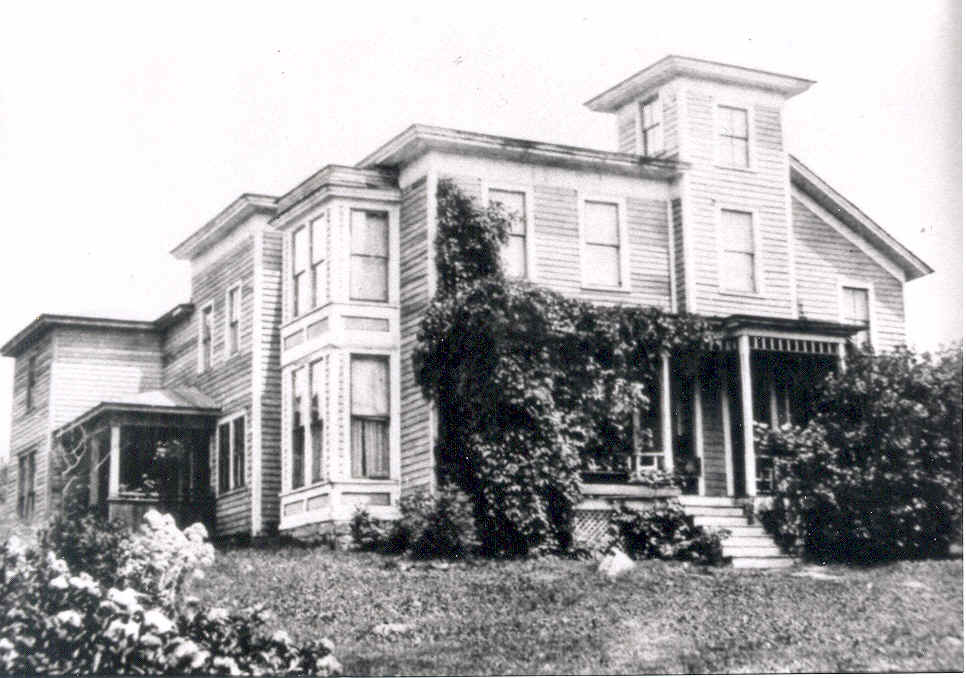
The Summit Hotel was located at the junction of the St. Marys Turnpike (Stony Road today) and the Lime Kiln Road. This was a popular stopping point for travelers and locals alike. It offered excellent over night guest rooms and a complete refreshment bar. Many political events were held here as well. The hotel was later sold and utilized as a residential home by the Markert family, whose descendants (Harry Markert) still live there today.
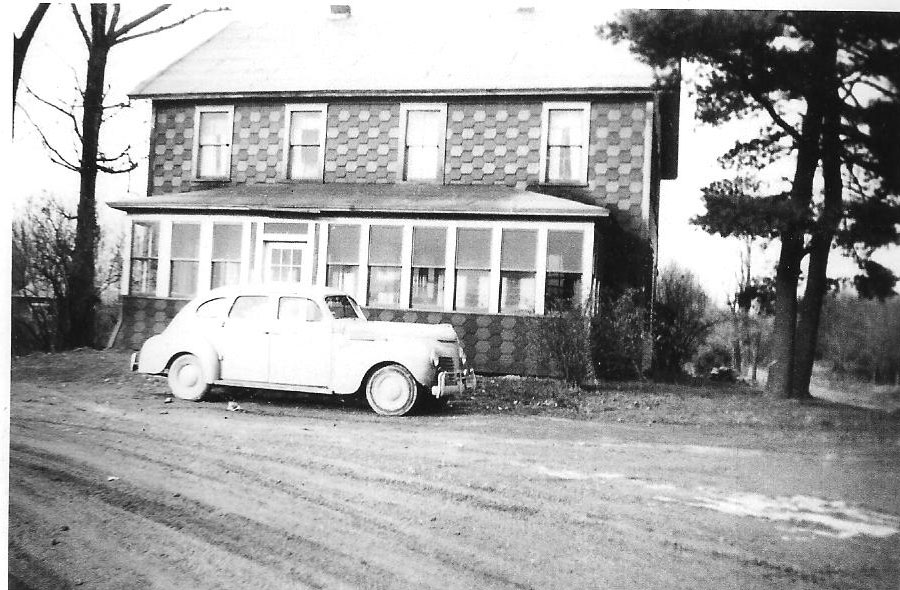
A local mountain man by the name of “Ketner” who lived near Glen Hazel in a small cabin in the nearby woods is said to have frequented the Summit Hotel. Folklore has it that the bartender would provide a word of warning to new customers and guests at the Hotel not to start any arguments with Mr. Ketner. Being a rather tall and big-build outdoorsman, Ketner had a short temper and would surely take anyone to task that didn’t share his opinions. The bartender had indicated that Ketner, way more than once, has been known to throw bar patrons out to the middle of the road! Today, Ketner Road bears this gentleman’s name!
Many other small business existed in the Rasselas farming district of Jones Township. Mr. Roy Smith, who lived near the former Clay Mansion owned and operated a small gas station and a small store along the Rasselas Road. Just down the road, across from the Instanter Road intersection, Jim Reiter opened Reiter Provisions. A quality meat processing facility. The Szymanski family also operated a small bar and lodging rooms closer to Wilcox.
Closer to Wilcox, Jake Brawand operated Brawands Dairy which offered home delivered dairy products.
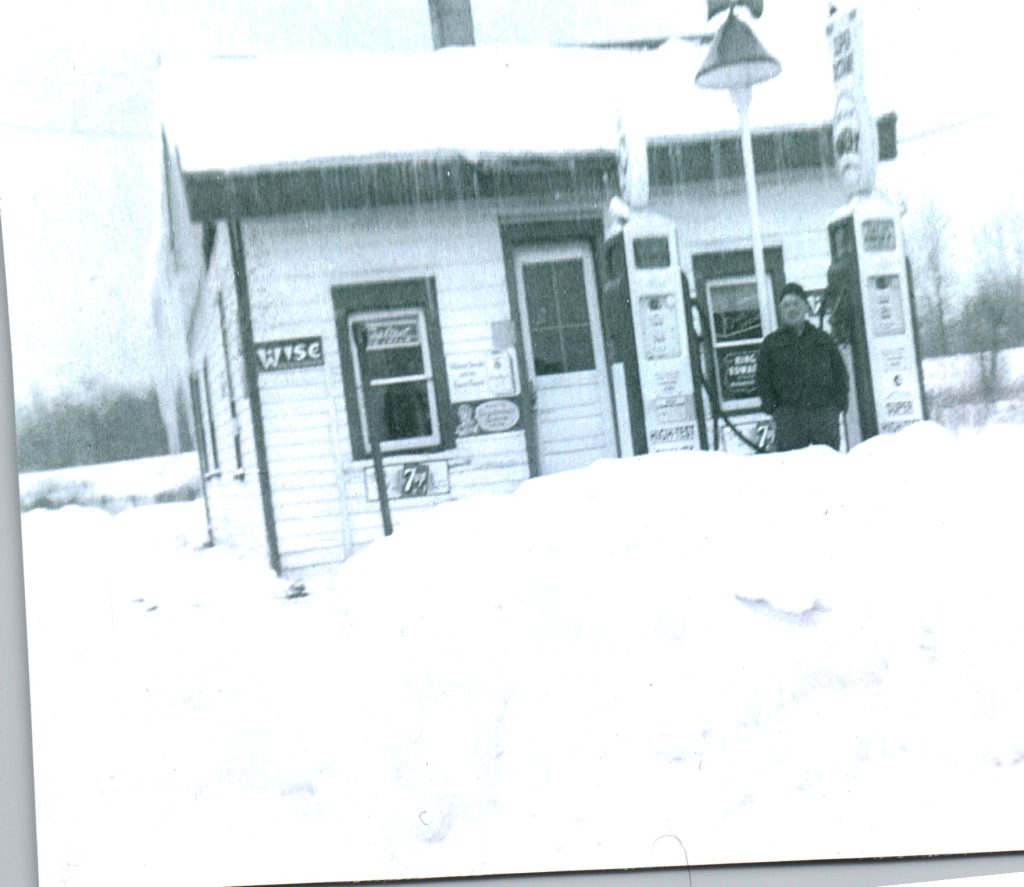
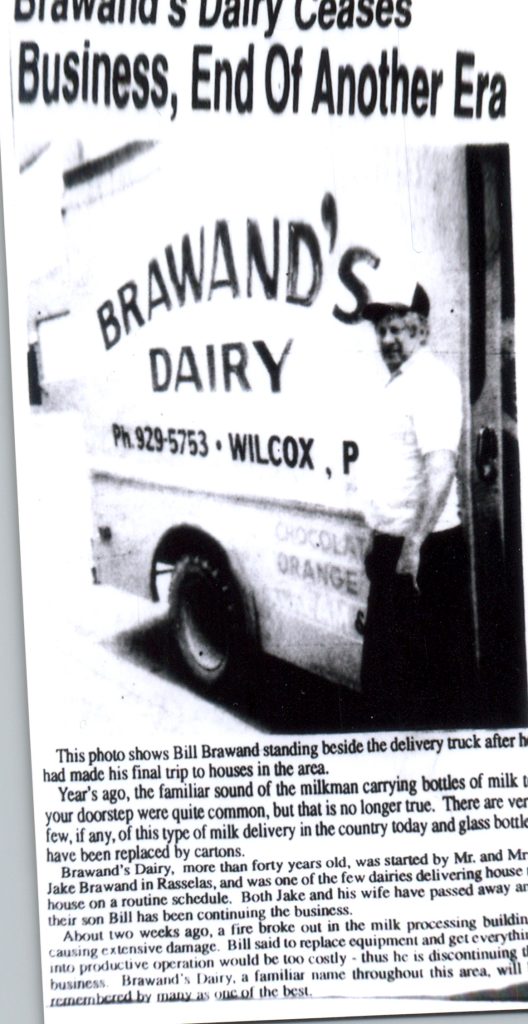
In addition to the farming community of Rasselas, the area was also know for it coal reserves. Many underground mines existed in the area as early as 1883. Since the railroad traveled through the area, crossing the Rasselas Road three times, a coal tipple and loading terminal was constructed near the Brechtel Road railroad crossing.
A large new surface or strip mining operation began in 1942 in the Stony Hill and Markert Road areas. This new type of mining that had not yet been experienced in this part of Elk County, had been rushed by interest groups and investors from Westmoreland County. This strip mining was eventually curtailed in the 1950’s after the construction of the East Branch Dam & Lake. The mining activities were severely polluting the new lake with acid water runoff. The state government then declared the waters in the East Branch watershed as High Quality Waters of the Commonwealth, thus preventing any additional mining activity. Several attempts have been made by different environmental groups and state government to clean-up this acid mine drainage that continues to this day. In the year 2000, a detailed study was conducted to study the environmental impacts of the old mining activity.
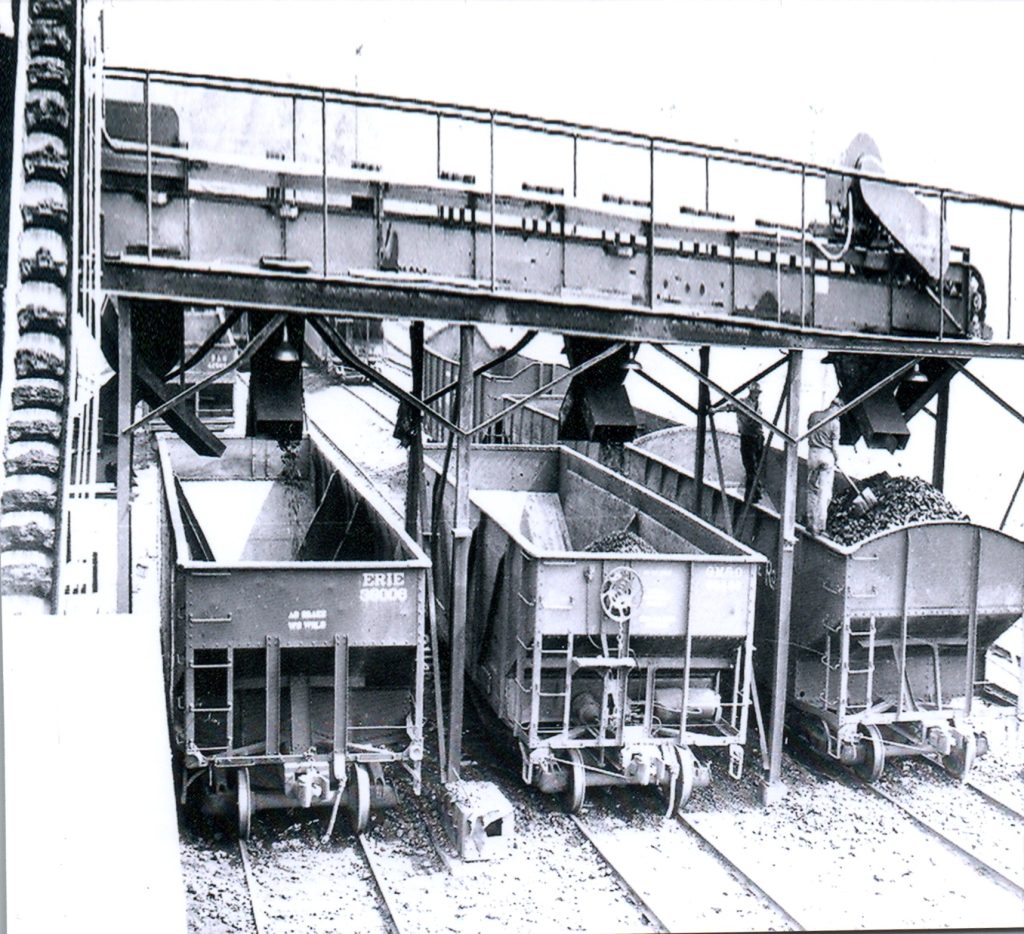
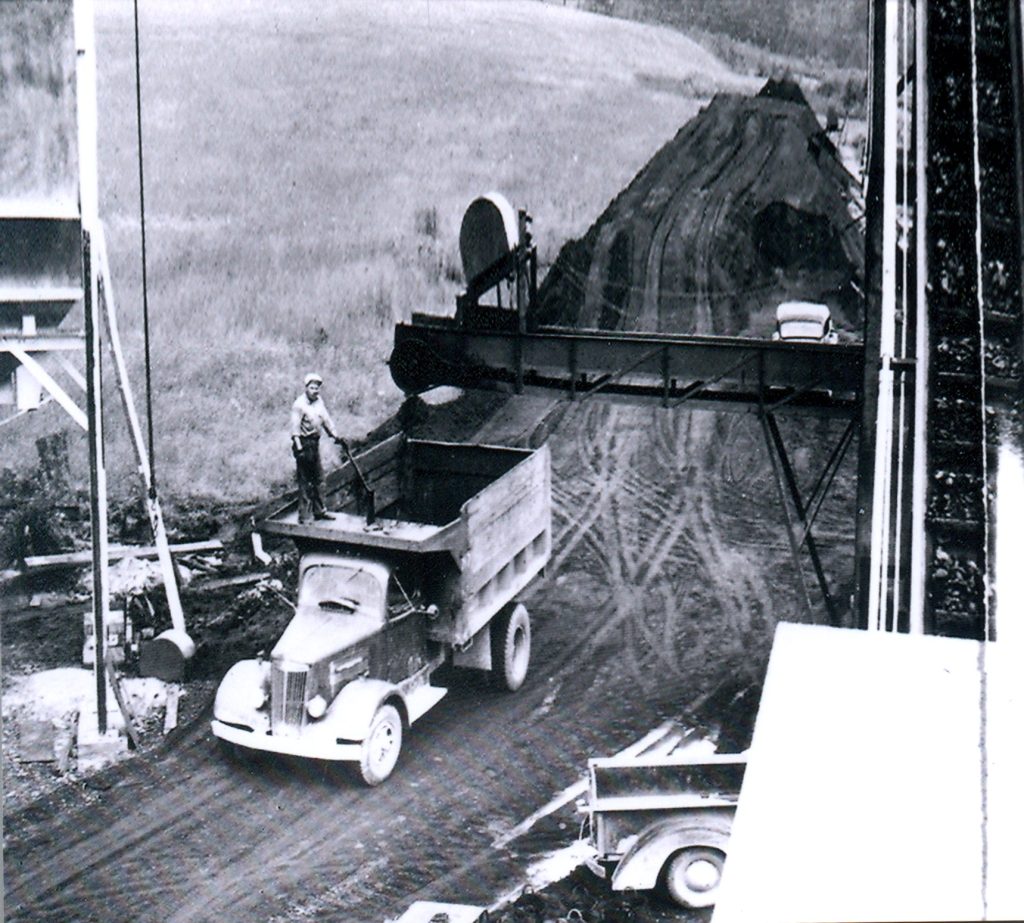
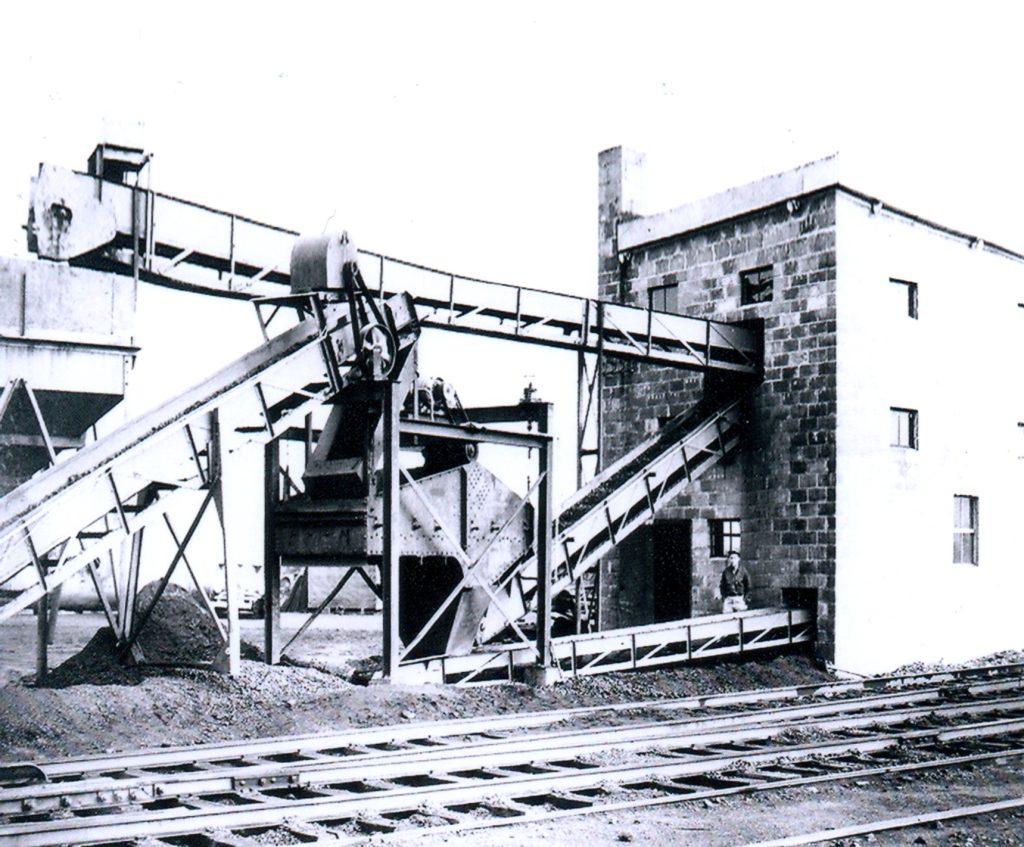
WKYN-FM Radio Station
This station first went on the air as WKYN, on April 22, 1986. The station was founded by legendary Pittsburgh radio personality Bob Stevens, who had been looking to buy or build a radio station of his own in Western Pennsylvania. That opportunity presented itself in 1985, when he successfully applied for the license to operate at 97.5 FM, originally licensed to Ridgway.
For the first three years, the studios and transmitter were located at the transmitter site in a remote, wooded area of Jones Township off of Markert Road, Rasselas, with business and sales offices in downtown St. Marys. Signals were radiated by a 4-bay, ERI “Rototiller” antenna atop a newly erected 535 foot tower. On several occasions, air staff were stranded at the studio/transmitter facility due to heavy snow accumulation and ice storms. In 1989, Stevens purchased a defunct drive-in theater south of St Marys, and consolidated both the studios and offices there (this site near Kersey is now a stone sales yard).
The old tower and transmitter in Rasselas were left standing, and later purchased for cellular phone service. In 2010 the 535-foot original radio tower and building was removed and replaced by a new 300-foot guyed tower used by Verizon, and the Commonwealth of PA.
